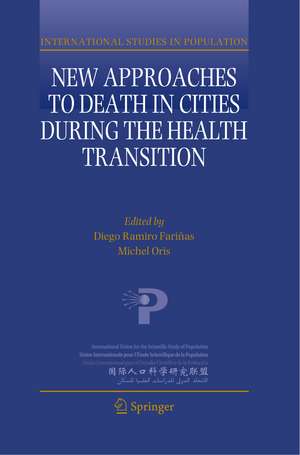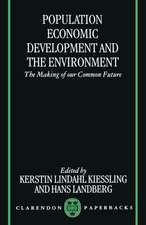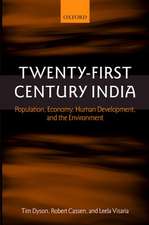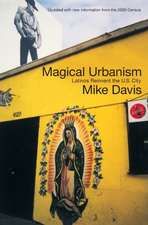New Approaches to Death in Cities during the Health Transition: International Studies in Population, cartea 12
Editat de Diego Ramiro Fariñas, Michel Orisen Limba Engleză Paperback – 14 aug 2018
| Toate formatele și edițiile | Preț | Express |
|---|---|---|
| Paperback (1) | 319.21 lei 6-8 săpt. | |
| Springer International Publishing – 14 aug 2018 | 319.21 lei 6-8 săpt. | |
| Hardback (1) | 392.97 lei 6-8 săpt. | |
| Springer International Publishing – 21 noi 2016 | 392.97 lei 6-8 săpt. |
Preț: 319.21 lei
Nou
Puncte Express: 479
Preț estimativ în valută:
61.08€ • 63.94$ • 50.54£
61.08€ • 63.94$ • 50.54£
Carte tipărită la comandă
Livrare economică 05-19 aprilie
Preluare comenzi: 021 569.72.76
Specificații
ISBN-13: 9783319994000
ISBN-10: 331999400X
Pagini: 241
Ilustrații: VIII, 241 p.
Dimensiuni: 155 x 235 x 17 mm
Greutate: 0.36 kg
Ediția:1st ed. 2016
Editura: Springer International Publishing
Colecția Springer
Seria International Studies in Population
Locul publicării:Cham, Switzerland
ISBN-10: 331999400X
Pagini: 241
Ilustrații: VIII, 241 p.
Dimensiuni: 155 x 235 x 17 mm
Greutate: 0.36 kg
Ediția:1st ed. 2016
Editura: Springer International Publishing
Colecția Springer
Seria International Studies in Population
Locul publicării:Cham, Switzerland
Cuprins
New approaches to death in the cities during the health transition. An introduction: Michel Oris, Diego Ramiro Farinas.- Mortality within the city: historical Europe: Understanding infant mortality in the city: exploring registration and compositional effects. Madrid, 1905-1906: Barbara A. Revuelta Eugercios, Diego Ramiro Farinas.- Environment, housing, and infant mortality: Udine, 1807-1815: Alessio Fornasin, Marco Breschi, Matteo Manfredini.- Residential mobility and child mortality in early twentieth century Belfast: Alice Reid, Eilidh Garrett, Simon Szreter.- Micro-analysis of mortality in urban areas. The parish of Oliveira in Guimaraes between the 18th and 20th century: Norberta Amorim, Antero Ferreira, Luis Machado.- Urban mortality in transition: Infant and childhood mortality in a context of transitional fertility. Geneva 1800-1900: Reto Schumacher.- A slow transition. Infant and child mortality decline in a Sardinian community: Alghero (1866-1935): Marco Breschi, MassimoEsposito, Stanislao Mazzoni, Lucia Pozzi.- The democratization of longevity: how the poor became old. Paris, 1870-1940: Lionel Kesztenbaum, Jean-Laurent Rosenthal.- Urban mortality in the developing world: Estimating effects over time of influences on urban health outcomes: a longitudinal multilevel epidemiological investigation: Barthélémy Kuate Defo.- Will urban and rural mortality converge in Africa?: Michel Garenne.- Urban mortality transition: the role of slums: Günther Fink, Isabel Günther, Kenneth Hill.- Health disparities at the periphery of Ouagadougou: Clémentine Rossier, Abdramane Soura, Bruno Lankoande, Roch Millogo.
Notă biografică
Diego Ramiro-Fariñas (PhD in Sociology, 1998, UCM), Head of the Department of Population at the Spnaish National Research Council. Marie Curie Fellow at the Cambridge Group for the History of Population and Social Structure at the University of Cambridge (UK) from 1998 to 2000. From 2001, tenured scientist at the Spanish National Research Council. From 2002, Head of the Department of Demography. From 2010-2012, Vice-Director at the Center for Human and Social Sciences. From 2011, elected President of the Iberian Association of Historical Demography. From 2011, Member of the International Advisory Board of the Historical Sample of the Netherlands. From 2012, Member of the Council of Advisors of Population Europe, the Network of Leading’s Demographic Research Centers in Europe. From 2013, Head of the Department of Population. From 2014, Chair of the Historical Demography Panel at IUSSP. From 2015, Secretary General and Treasurer of the European Society of Historical Demography and member of the Advisory Board of the LatinAmerican Mortality Database University of Wisconsin-Madison. From 2016, IP and Coordinator of ITN Marie Curie H2020 LONGPOP project. His main areas of interest are on the study of mortality and health, demographic analysis and longitudinal studies.
Michel Oris (PhD in History, 1991, University of Liège) occupied a number of research posts through Belgium's Fund for Scientific Research. Since March of 2000 he has been a full professor at the Geneva School of Social Sciences at the University of Geneva. He teaches Demography, Economic and Social History, and Socioeconomics. Before joining the Rectorate in mid-July of 2015, he was the director of the Interdisciplinary Center for Gerontology and Vulnerability Studies and codirector of the Swiss National Centre of Competency in Research "LIVES. Overcoming Vulnerabilities. Life Course Perspectives". He also founded and directed the Socioeconomics program at the University of Geneva. He is president of the Association Internationale des Démographes de Langue Française and the Société de Démographie Historique. His research focuses on inequalities, with an emphasis on the living and health conditions of the elderly, injustices regarding death, and interactions between individual trajectories and the dynamics of social structures, and between vulnerabilities and life courses.
Textul de pe ultima copertă
This book presents recent efforts and new approaches to improve our understanding of the evolution of health and mortality in urban environments in the long run, looking at transformation and adaptations during the process of rapid population growth. In a world characterized by large and rapidly evolving urban environments, the past and present challenges cities face is one of the key topics in our society. Cities are a world of differences and, consequently, of inequalities. At the same time cities remain, above all, the spaces of interactions among a variety of social groups, the places where poor, middle-class, and wealthy people, as well as elites, have coexisted in harmony or tension. Urban areas also form specific epidemiological environments since they are characterized by population concentration and density, and a high variety of social spaces from wealthy neighborhoods to slums. Inversely and coherently, cities develop answers in terms of sanitary policies and health infrastructures. This balance between risk and protective factors is, however, not at all constant across time and space and is especially endangered in periods of massive demographic growth, particularly periods of urbanization mainly led by immigration flows that transform both the socioeconomic and demographic composition of urban populations and the morphological nature of urban environments. Therefore this book is an unique contribution in which present day and past socio-demographic and health challenges confronted by big urban environments are combined.
Caracteristici
Sheds new light on urban health and social inequalities Presents an international perspective on long term urban demographic changes Describes health transition in an urban world



























